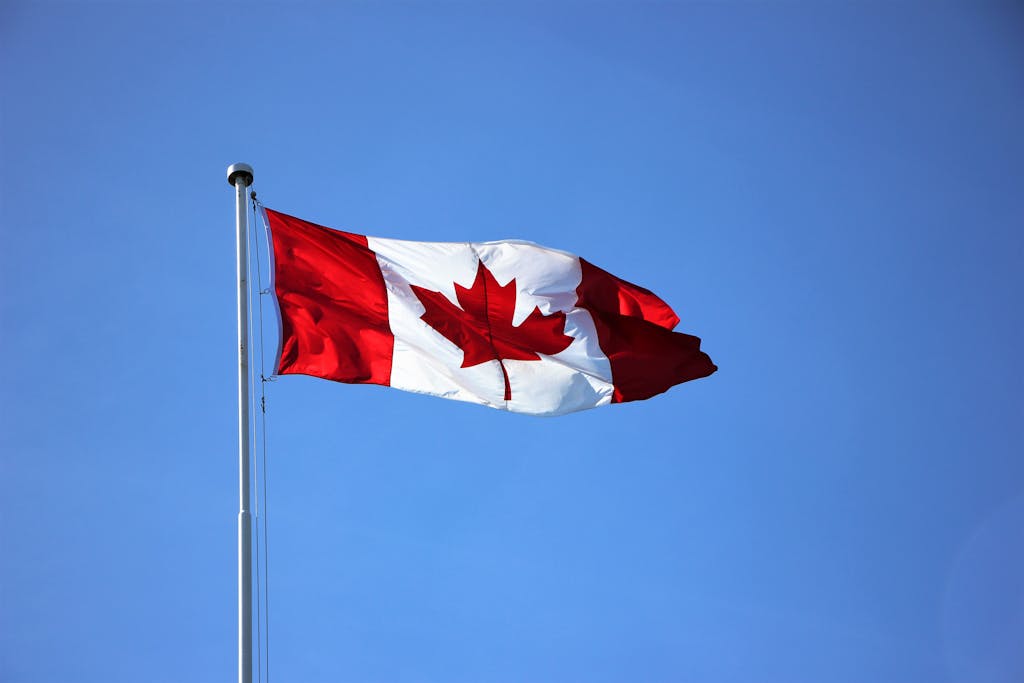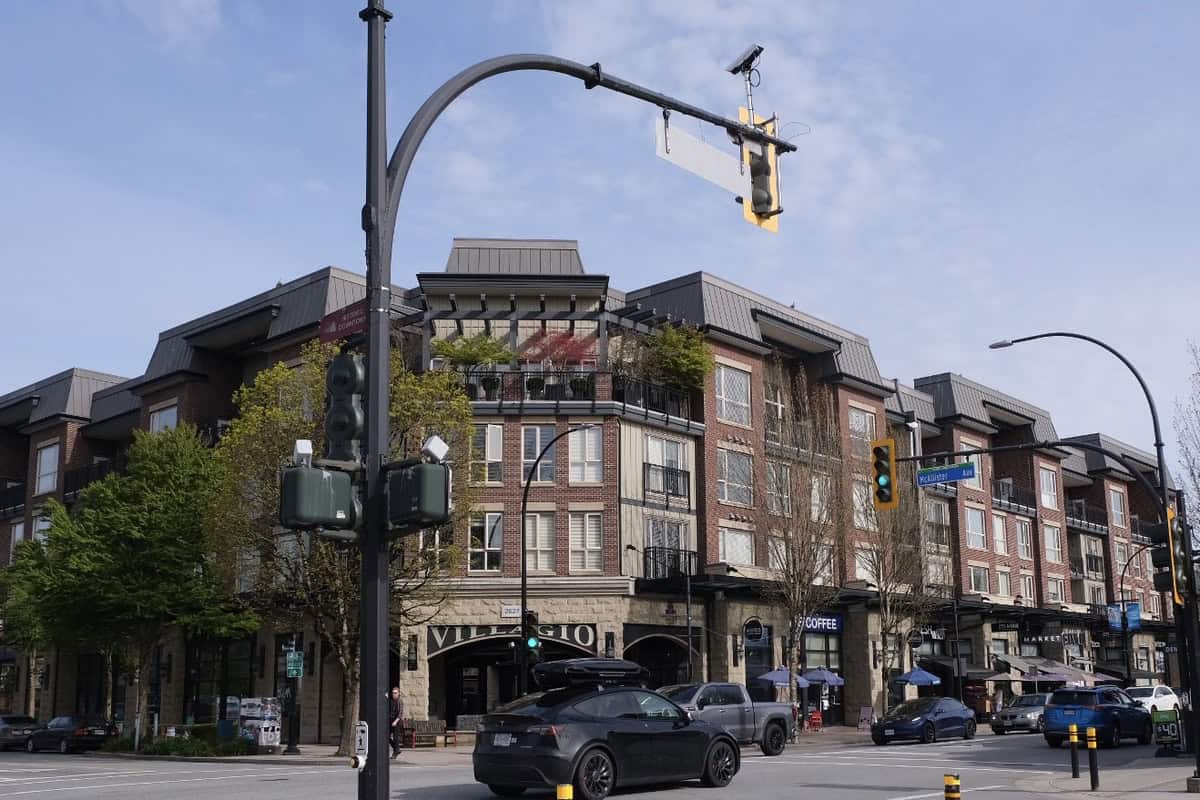Moving to Canada is a big life change. Exciting, but let’s be honest… also overwhelming. When it comes to financial steps for newcomers, I remember arriving from Hong Kong with so many questions: Which bank account is good? How do I send money over? How does tax even work here?”
If you’re feeling the same, you’re not alone. I’ve been there, and that’s exactly why I’m writing this. Whether you’re here on a work permit, study permit, just got your PR, or moved with family, setting up your finances early can make your new life feel a lot more secure and less stressful.
So here are 5 important financial steps I personally took (and recommend!) right after moving to Canada, including the easiest way I found to transfer money from Hong Kong and where I got the best interest rate on a savings account.

Step 1 — Open a Bank Account ( I chose Simplii Financial)
One of the very first things I did after landing in Canada was open a local bank account. It became the foundation for everything, getting paid, paying bills, transferring money from Hong Kong, and most importantly, finally feeling like I was starting to settle in.
After looking around, I decided on Simplii Financial, and honestly, I’ve been so glad I chose it.
Why Simplii Financial Worked for Me as a Newcomer
- No Monthly Fees: Simplii’s No Fee Chequing Account has no monthly fees or minimum balance, perfect for newcomers watching their budget.
- Unlimited Free Transactions: Send e-Transfers, pay bills, and use your debit card freely without extra charges.
- Access to CIBC ATMs & In-Person Help: Use any CIBC ATM for free across Canada, and get in-person support at CIBC branches when needed.
- Deposit Cheques with Your Phone: Deposit cheques easily by taking a photo in the app, no branch visits required.
- High-Interest Savings Account: Their High-Interest Savings Account offers a great rate (3.70% for 7 months) to help grow savings safely.
- Additionally, enjoy $300 Welcome Bonus: Get $300 for signing up and setting up $100 direct deposits for three months, a nice bonus for newcomers starting work or receiving payments.
BONUS: Simplii Financial Cash Back Visa
I also got their Cash Back Visa card, and I’m loving the perks:
- 8% cash back on eligible restaurants, cafés, and bars for the first 3 months (up to $80 bonus)
- Then 4% cash back on dining, 1.5% on groceries, gas, and drugstores, and 0.5% on everything else
- No annual fee, which is great if you’re just starting to build credit
Want an Extra $50?
If you open a Simplii account using my referral link, you could get up to $430 in rewards, including a $50 referral bonus, $300 for setting up direct deposit, and up to $80 cash back on dining in your first 3 months. Easy wins while getting your finances set up!
Step 2 — Transfer Money from Your Home Bank
One of the first things I needed to do after arriving in Canada was to bring money over from my bank in Hong Kong. At first, I thought about using a traditional bank wire transfer, but the fees were higher, and the exchange rate wasn’t great. After some research and asking friends, I found Wise, and I’ve been using it ever since. It’s honestly one of my favorite tools as a newcomer.
Why I Use Wise (and You Might Love It Too)
- Low, transparent fees: no hidden charges like traditional banks
- Better exchange rates: they use the real mid-market rate, which saves you money
- Fast transfer time: my money usually arrives in 1–2 days
- Easy to use: super beginner-friendly, even if you’ve never done a transfer before
- Safe and regulated: trusted by millions of users worldwide
You can even track the transfer step-by-step in real time. I love seeing exactly where my money is and when it would land in my Canadian account.
BONUS for You
If you sign up using my referral link here, your first transfer of up to $900 CAD (or equivalent) is FREE of charge. No fees at all.
I personally use Wise and only recommend it because it’s been a reliable tool for me.
Transferring money from home doesn’t have to be stressful. Wise made it simple and affordable. And I still use it today to send and receive money between Canada and Hong Kong when needed.

Step 3 — Apply for a Credit Card and Build Credit
In Canada, your credit score matters a lot, not just for loans, but for renting apartments, setting up utilities, or even getting a phone plan. So one of the first financial steps I took was to apply for a newcomer-friendly credit card, even though I didn’t have any Canadian credit history yet. I used my new card for small things like groceries, phone bills, and online shopping, and paid it off in full every month. That helped me build a strong credit score from the start.
Why Credit Scores Matter in Canada?
When we first arrive in Canada, our credit history from back home doesn’t transfer over, which means we’re starting from scratch. That might feel a bit frustrating at first, but building good credit here is so important. In fact, having a strong credit score in Canada can help us:
- Get approved for rentals. Many landlords ask for a credit check
- Qualify for better interest rates on car loans, mortgages, and lines of credit
- Look more trustworthy to employers (some jobs do credit checks)
That’s why it’s worth starting early, even with a small limit. Over time, a strong credit score shows that we’re financially responsible. It can also open doors to better opportunities, like lower interest rates, easier approval for rentals, and even future loans when we’re ready to buy a car or home.
Why I Recommend the Simplii Financial Cash Back Visa Card
- No annual fee: perfect for newcomers watching their budget.
- Earn up to 4% cash back: at restaurants, bars, and coffee shops.
- 1.5% cash back: on gas, groceries, drugstore purchases, and recurring payments.
- No Canadian credit history required: apply through Simplii’s New to Canada Program.
- Quick online application and easy approval
- Helps you start building credit right away
I started using this card for everyday expenses like groceries, phone bills, and transit. Then, each month, I made sure to pay off the full balance on time. By sticking to this simple habit, I gradually built a healthy credit score from zero, one step at a time.
As I mentioned in Step 1, if you use my Simplii referral link to sign up, you can also get an extra welcome bonus. (Offers may vary, please check the latest terms when you sign up.)
Once you get your first credit card in Canada, here are some smart habits that will help you build a strong credit score over time. Check out “Credit Score Secrets Every Newcomer Should Know” to learn more.
Step 4 — Track Your Spending and Start Budgeting Smartly
When I first moved to Canada, I didn’t earn much, and everything felt expensive! One of the best things I did was start tracking my expenses. You don’t need fancy apps to manage your money here. I began with a simple Google Sheets spreadsheet, it’s free, easy to use, and clearly shows where every dollar goes. I listed all my monthly costs, from rent and groceries to phone bills, plus little treats like bubble tea. Seeing it all in one place helped me spot where I could cut back and gave me a sense of control over my finances.
Inspired by “I Will Teach You to Be Rich” by Ramit Sethi, I realized that we don’t need a super strict budget. Instead, automating our money and staying aware of where it goes is what really matters.
The Budgeting Method That Worked for Me
I followed advice from the book I Will Teach You To Be Rich by Ramit Sethi. Instead of a strict, boring budget, he recommends a Conscious Spending Plan. Here’s a simple breakdown based on monthly income:
- 50–60% → Fixed costs (rent, groceries, phone bills, transportation)
- 10% → Long-term savings or investments
- 5–10% → Short-term goals (paying off debt, big purchases, etc.)
- 20–30% → Guilt-free spending (shopping, eating out, hobbies)
This plan made me feel in control without feeling restricted. I could still enjoy life while saving for my future, even with a small income.
Budgeting isn’t about cutting out fun, rather, it’s about spending with intention. By tracking your money consistently, you take the crucial first step toward building financial stability in Canada. So, start small, stay consistent, and most importantly, remember this, you’re in control.

Step 5 — Learn Basic Canadian Taxes and How to Get Benefits as a Newcomer
When I first moved to Canada, I didn’t realize we could actually get money back from the government! Yes, newcomers qualify for several tax-free payments and benefits that can help with living costs.
Filing Taxes Is Key
Filing our taxes every year is the main way to access these benefits. We’ll need a Social Insurance Number (SIN), which is essential for working, opening bank accounts, and filing taxes.
Even if we’re not tax experts, filing taxes is simpler than it seems. I personally use Wealthsimple Tax, which is free, newcomer-friendly, and guides us through the process step by step. Plus, signing up through my referral link here gives a little bonus to start with!
Looking Ahead: TFSA and RRSP for Saving
After settling in, it’s a great idea to start by opening tax-friendly savings accounts like the TFSA (Tax-Free Savings Account) and RRSP (Registered Retirement Savings Plan). These accounts not only help our money grow tax-free or tax-deferred but also serve as powerful tools for building a strong financial future.
I recommend using Wealthsimple Invest for these accounts. It’s simple, affordable, and perfect for beginners. Plus, signing up with my referral link gives us an extra bonus to kickstart our investing journey!
Understanding taxes and benefits might seem overwhelming at first, but it’s one of the smartest moves we can make as newcomers to Canada. By filing taxes on time and learning about available benefits, we can put extra money back in our pockets and build a stronger financial foundation. Taking these steps early helps us feel more confident and supported as we settle in our new home.
In Summary
Moving to Canada is a big change, but taking control of our finances early on can make the transition smoother. By following these five steps, we can build a solid financial base and feel more confident in our new home. Remember, it’s okay to take things one step at a time. If you have questions or want to share your experiences, drop a comment below. We’re in this together!

Note: This post contains referral links. If you use them, I may receive a small commission, at no cost to you. I only share what I personally use and trust. Thanks for supporting Live with Samantha! 🙂


Pingback: How to Build Credit Score in Canada as a Newcomer: Step-by-Step Guide - Live with Samantha
Pingback: Budget Life in Vancouver: How We Thrive on $3,500/Month